What Are Labor and Delivery Complications?
Both labor and delivery complications refer to any type of difficulty or abnormality to the baby during the labor process, meaning any time from when the mother’s water breaks through after the child is delivered. These labor and delivery complications can threaten the health of the mother or her child.

It is critical for healthcare providers to be prepared for what can go wrong during the childbirth process so they can swiftly react and treat any labor and delivery complication that may arise. Failure to properly diagnose and treat complications during birth, including ones that happen before and after the labor process, can lead to preventable birth injuries for the mother or her newborn child and may be considered medical malpractice.
Free Legal Consultation
Birth Injury Lawyers
1-888-987-0005Our Birth Injury Lawyers are available to meet you in your home or the hospital.
Without proper diagnosis and treatment of labor and delivery complications, a newborn can suffer from devastating birth injuries that have lifelong consequences such as hypoxic-ischemic encephalopathy (HIE) or even cerebral palsy.
Miller Weisbrod Olesky has a decades-long track record of results for children and families across the United States that suffer from improperly treated labor and delivery complications. Let us put our experience and expertise to work for you and your child to ensure they receive the treatment, care, and financial resources they deserve.
What Are Common Labor and Delivery Complications?
Oxygen Deprivation
A predominant cause of brain damage around at birth is inadequate oxygen supply to the fetus or newborn baby. Several clinical terms are used to describe this condition. Deficiency of oxygen in infants is known as “hypoxia”, while complete lack of oxygen is called “anoxia”. The physiological outcomes of anoxia or hypoxia are termed as “birth asphyxia.”

Cerebral anoxia is sometimes used to describe a condition when the oxygen supply to the brain is completely cut off. This condition usually causes permanent brain damage. Many babies that suffer hypoxia or anoxia in the perinatal phase (shortly before and after birth) develop hypoxic ischemic encephalopathy (or HIE), which occurs when the oxygen content in the blood is extremely low and blood flow to the brain is reduced.
Oxygen deprivation often either leads to or is caused by one or more of other complications discussed in this section:
Learn More About
Birth Asphyxia
Prolonged Labor
A woman’s labor is considered “prolonged” if it progresses more slowly than average. For most women, labor will be considered prolonged if their contractions have lasted more than 20 hours. Depending on other pregnancy-related factors, doctors may decide that labor is prolonged at 18 hours or sometimes as long as 24 hours.
While prolonged labor means progress has slowed, arrested labor means that progress has ceased. Arrested labor is also referred to as failure to progress. A failure to progress in labor can drain the fetus of the necessary energy required t to handle the demands of delivery. This lack of fetal reserves can make the child extra susceptible to injuries from a disruption in oxygen flow.
Both prolonged and arrested labor pose a threat to the baby’s oxygen supply. During contractions, the flow of oxygen transmitted to the baby is temporarily restricted. This is a natural part of the birthing process, but it can become dangerous when labor contractions are prolonged and the child has a lack of fetal reserves.
Babies deprived of oxygen from prolonged or arrested labor can go into fetal distress or sustain brain injuries.
Learn More About
Prolonged & Arrested Labor
Fetal Distress
Fetal distress, also commonly referred to as fetal intolerance to labor, describes a condition where a baby is not receiving enough oxygen during the delivery process. It is usually indicated by an irregular heart rate. Before birth, babies receive nutrients and oxygen from their mother’s body. During contractions, the amount of oxygen transmitted to the baby is temporarily blocked. This can cause the child to go into fetal distress if the labor is prolonged or arrested.

Fetal heart monitoring is an essential tool during childbirth. When done correctly, the results of monitoring can alert obstetricians, maternal-fetal medicine specialists, nurses, midwives, and other healthcare professionals to a baby being in fetal distress.
Healthcare providers typically use an electronic Doppler transducer attached to the mother’s abdomen to monitor the baby’s heart rate. Sometimes, another transducer is attached to the baby’s scalp via an intrauterine catheter for closer monitoring. The transducer sends and receives sound waves, then amplifies the sounds created by the baby’s heartbeats.
Fetal heart monitoring indicates abnormal rates and rhythms. Alarming patterns of variable decelerations and late decelerations of the baby’s heart rate can appear during labor. Late decelerations are indicators of fetal distress because it means the baby is not recovering from the temporary blockage of oxygen during a contraction.
The conditions that lead up to fetal distress may be complicated, but the signs are well known to medical staff. Proper monitoring of both mother and baby should identify the danger and prompt medical staff into responding with swift, appropriate treatment.
Learn More About
Fetal Distress
Placental Abruption
Placental abruption occurs when the placenta unexpectedly detaches from the uterine lining. When this happens, the mother can suffer excessive bleeding, shock, and organ failure. Placental abruption can also deprive the baby of oxygen because of reduced blood flow. As a result, the baby can suffer fetal distress and hypoxic-ischemic encephalopathy (HIE). If a placental abruption is not immediately addressed and treated, both mother and baby could die or suffer long-term damage.

It’s critical that medical providers understand the causes of placental abruption, identify women who are at risk, and know how to treat and respond to this medical emergency.
Learn More About
Placental Abruption
Uterine Rupture
Uterine rupture is a serious labor complication that is somewhat rare but life-threatening, especially when mismanaged or caused by medical providers. A uterine rupture is always a medical emergency that requires an emergency delivery of the baby. A mother experiencing sudden contractions that occur very close together is an indicator that she is experiencing rapid labor.

The risk of a uterine rupture is higher for women who have previously given birth via a cesarean (c-section) delivery and are attempting a vaginal birth (known as vaginal birth after cesarean or VBAC). This is because c-section deliveries require making an incision into the uterus, which increases the chances of tearing during future pregnancies.
Babies born after their mother’s uterine rupture could suffer severe, permanent physical damage. Some may have a birth-related brain injury called hypoxic-ischemic encephalopathy (HIE). Newborns with HIE will have life-long disabilities, including cerebral palsy and cognitive impairment.
Learn More About
Uterine Ruptures
Uterine Tachysystole and Hyperstimulation
During labor and delivery, the term uterine tachysystole is often used to refer to excessive uterine activity or contractions.
A series of abnormally strong contractions during labor has been associated with decelerations in fetal heart rate that may progress to fetal distress and cause a newborn to suffer a birth injury. A baby can withstand a certain degree of diminished oxygenation. However, when contractions due to uterine tachysystole are too strong, too long, or occur too frequently, they can cause dangerous levels of oxygen deprivation.
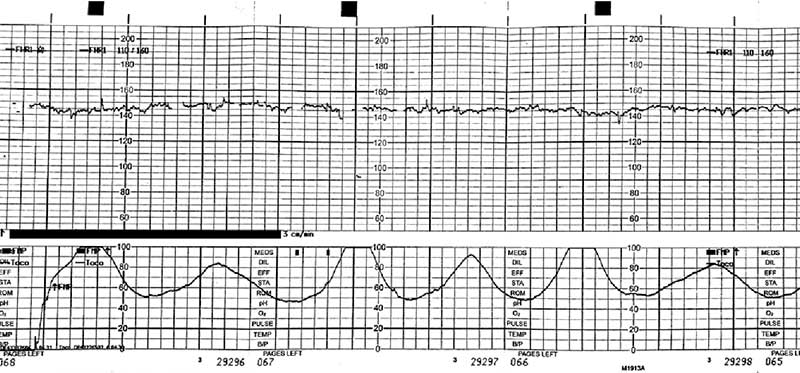
Uterine hyperstimulation occurs whenever there is any increase in uterine activity associated with an irregular fetal heart rate. Like uterine tachysystole, it can result in oxygen deprivation and fetal distress. Early detection of uterine tachysystole through fetal heart rate monitoring is crucial to preventing uterine hyperstimulation from causing a birth injury.
Learn More About
Uterine Tachysystole
Meconium Aspiration Syndrome
Meconium is a baby’s first feces. Meconium aspiration syndrome (MAS) occurs when a mixture of amniotic fluid and meconium gets aspirated into the lungs (i.e. when the baby breathes in this mixture) around the time of delivery. MAS is a major cause of serious medical complications or death in infants, usually occurring during prolonged or arrested labor or when the baby is born prematurely.
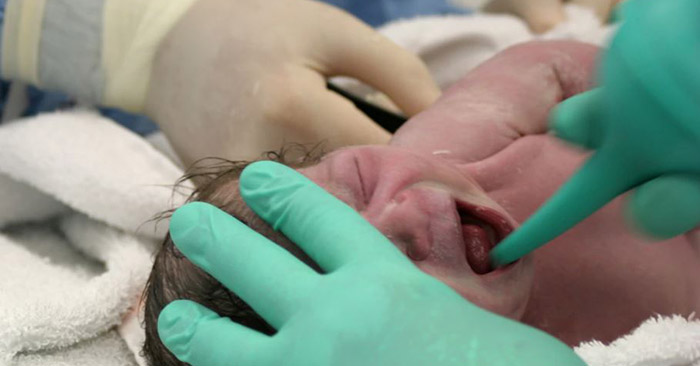
It is notable that meconium lines the intestines of the fetus, even though the fetus does not eat. When oxygen deficiency (hypoxia), infection, or another form of fetal distress causes the baby to gasp for breath, they may inhale meconium mixed with amniotic fluid into their lungs.
Quick aspiration of the meconium at childbirth can present serious lung and brain injuries. Medial providers’ alertness to the signs of MAS can help predict the risk ahead of time and prepare for timely treatment.
Mismanaged Fetal Malposition
Fetal position is very important when it’s time for labor and delivery. Unborn babies usually spin and flip within their mother’s uterus until a few weeks before delivery. But most babies eventually settle into one position shortly before birth, which is almost always established by the 36th week of pregnancy.
The best position for the unborn child is usually occiput anterior. This means that the baby is head down in its mother’s pelvis facing her spine.
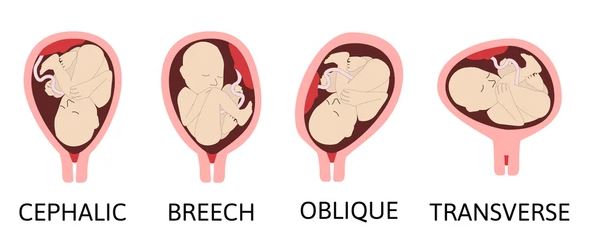
Medical professionals should catch dangerous positions and presentations during prenatal visits using ultrasound or physical examinations. Medical intervention is often needed when position or presentation is not optimal. Failing to diagnose and manage abnormal fetal positions and presentations is medical malpractice.
Learn More About
Fetal Positioning
Breech Position
Breech position is an abnormal fetal positioning where the baby’s feet are pointed toward the birth canal. Most babies are positioned to come out head-first, and any other positioning can present serious risks to the mother’s health during delivery.

About 3-4% of deliveries are breech presentations. Babies that are at breech at 37 weeks of pregnancy will not change on their own from this position. Doctors usually deliver breech babies by C-section because the baby is at risk for umbilical cord compression, spinal cord injuries, nerve damage, birth trauma, and hypoxic-ischemic injury due to reduced blood and oxygen flow to their brain.
Labor and delivery medical teams must be prepared to perform emergency caesarean (c-section) deliveries whenever a breech position is known or suspected so they can prevent the baby suffering from oxygen deprivation.
Cephalopelvic Disproportion
Cephalopelvic Disproportion (CPD) occurs when the size of the baby’s head is too large to fit through the maternal pelvis, resulting in an abnormal slowdown or failure of progress of labor. CPD is often diagnosed when cervix dilation has stopped or when the baby has not descended through the pelvis. When CPD causes a failure to progress in labor, it increases the risk of fetal distress and may necessitate a cesarean delivery to avoid a birth injury.

If cephalopelvic disproportion is not accurately diagnosed and treated or there is a delay in performing an emergency c-section, it can lead to serious consequences for the baby, such as birth asphyxia, hypoxic-ischemic encephalopathy (HIE), and cerebral palsy.
Medical providers facing CPD should be prepared to make fast decisions based on accurate diagnosis and an assessment of the mother and baby’s risk factors. A delay of even a few minutes in making the right decision about an emergency cesarean delivery can cause permanent brain damage in a baby.
Learn More About
Cephalopelvic Disproportion
Jaundice (Kernicterus)
Newborn babies may develop a yellowish color in their skin and eyes in their first days and weeks of life. This condition is called jaundice. The substance causing the yellow discoloration is bilirubin, a waste product created after red blood cells break down. Normally, the bilirubin travels to the liver, where it is broken down and then excreted from the body. Newborn babies may have trouble getting rid of bilirubin through this process. They may develop “hyperbilirubinemia,” which means the baby’s blood has a high level of bilirubin.
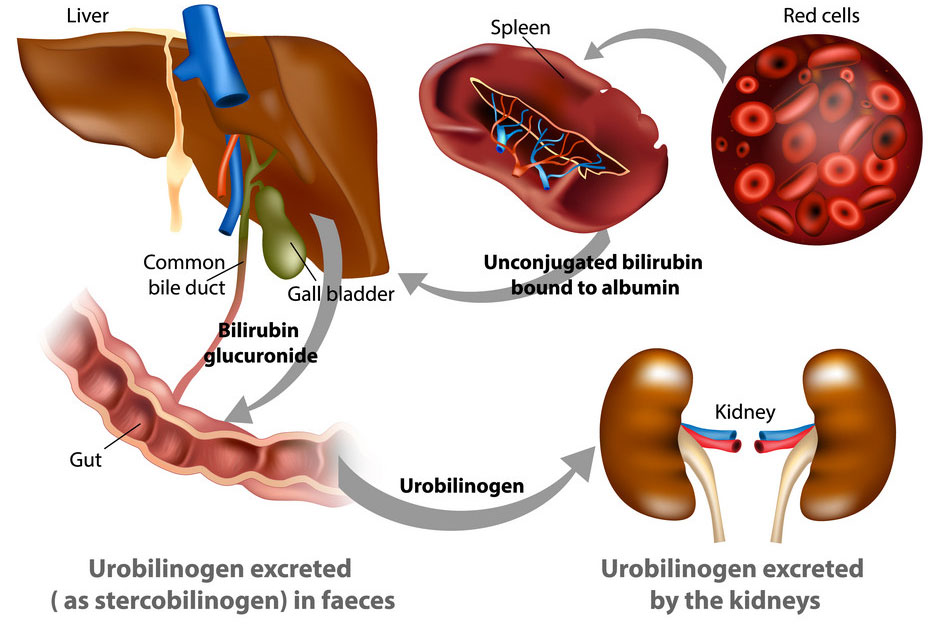
Kernicterus occurs when prolonged high bilirubin levels allow bilirubin to cross the blood-brain barrier. Bilirubin is then deposited into the brain, causing severe brain damage and cerebral palsy.
Learn More About
Neonatal Jaundice
Placental Complications
The placenta is an organ that forms within the uterus during a woman’s pregnancy. It is responsible for removing waste and providing oxygen and vital nutrients to the fetus. The fetus receives these nutrients from the placenta via the umbilical cord.
Different complications can sometimes displace or damage the placenta, jeopardizing the health of the baby and putting the mother at risk:
Placenta Previa
Placenta previa is a medical condition that may occur during pregnancy when the placenta fully or partially covers the cervix (the uterus opening). In normal conditions, the placenta is attached to the top of the inner uterine walls, but with placenta previa, it attaches lower.
The condition can usually be diagnosed early during the pregnancy with an ultrasound exam. Some patients with undiagnosed placenta previa may experience painless vaginal bleeding and visit the ER during the second or third trimester.
When an expectant mother has placenta previa, it may cause the blood vessels connecting the placental tissue to the uterus to tear at the time of labor or delivery. This can cause severe bleeding which will result in fetal distress if not immediately addressed with an emergency c-section. Placenta previa can even cause severe bleeding after birth endangering the life and welfare of the mother if the bleeding is not stopped.
Learn More About
Placenta Previa
What Birth Injuries can be Caused by Premature Delivery?
Premature birth or preterm birth is said to occur when a baby is born before the completion of 37 weeks of pregnancy. The final weeks of pregnancy are vital for the full development of the baby’s lungs, brain, and liver. Babies born prematurely (especially before 32 weeks gestation) are at higher risk of severe birth injuries like hypoxic-ischemic encephalopathy (HIE) and cerebral palsy.
According to the CDC’s 2022 figures, premature birth affects about one out of 10 babies born in the United States. Low birth weight and preterm birth account for about 17% of infant deaths within the first 12 months after birth. Common complications premature babies may experience include developmental delays, breathing problems, vision impairments or hearing problems. However, many of these birth complications are avoidable with proper care and treatment.

Premature delivery can be delayed through various medications and treatments to allow the baby to further developed prior to delivery. When premature delivery is imminent, it is incumbent upon obstetricians, nurses, and other medical providers to administer medications that speed up the child’s development of critical organs like the lungs. This process is known as antenatal corticosteroid therapy. Specialized care teams like neonatal intensive care specialists must be mobilized to immediately treat common complications of a premature birth to help minimize the risk of a serious birth injury.
Learn More About
Premature Birth
Cervical Incompetence (Insufficiency)
The cervix joins the top of the vagina to the uterus and plays a significant role in menstruation, fertility, pregnancy, labor and delivery as well as the actual childbirth. Until late in the third trimester, the cervix maintains its shape then begins to soften, shorten, and dilate in preparation for birth.
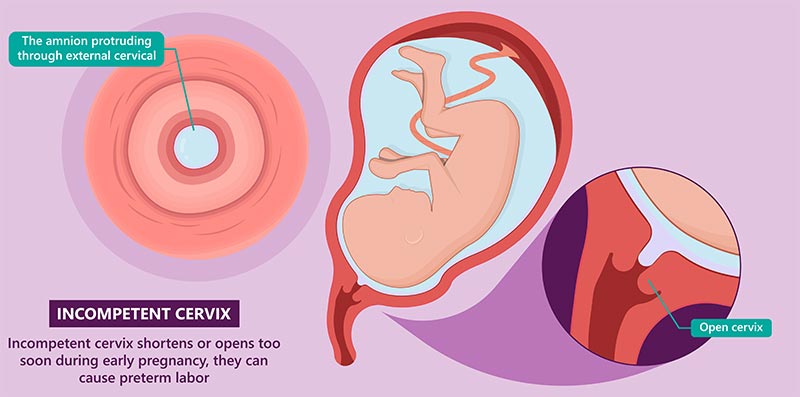
When pregnant women experience a condition called incompetent cervix, the cervix begins to shorten or dilate sooner than the 40-week gestational period. An incompetent cervix occurs in about 2% of pregnancies and puts the mother at risk of giving birth prematurely or miscarrying her child.
A mother with a short or incompetent cervix often needs extra monitoring during pregnancy. If proper care is not taken and she experiences a preterm delivery, it could put her newborn at increased risk of cerebral palsy, HIE, seizure disorders, and developmental delays.
Learn More About
Cervical Incompetence
Developmental Delays
One way a child’s early development can be tracked is through observation of a series of physical, cognitive, and emotional behaviors they display as they grow. These “milestones” can include a child’s first steps, their first words, or even the age where they hold their head up for the first time.

It’s true that children sometimes progress at slightly different rates. One nine-month-old might be walking while another is just starting to crawl. However, a baby or child who misses several milestones is cause for concern.
Medical malpractice can sometimes be the cause of developmental delays and disabilities. During pregnancy, labor, delivery, and postnatal care, improper or inadequate care can cause serious conditions like cerebral palsy and other brain injuries. The parents of a child with developmental delays might have a claim against health care professionals who failed to provide proper care or make the proper diagnosis.
Learn More About
Developmental Delays
Necrotizing Enterocolitis (NEC) (Intestinal Inflammation)
Necrotizing enterocolitis, or NEC, is a serious disease that affects the intestines of premature babies. NEC happens within the first 2 weeks of life in babies who are fed formula instead of breast milk. Hospitals routinely give baby formula to premature babies. Tragically, some of the most popular brands of formula used by hospitals are toxic and can lead to this fatal gastrointestinal injury.
If perforations in the intestines develop, bacteria may leak into the abdomen or bloodstream. This can lead to sepsis, and emergency surgery may be required to repair holes or remove portions of the intestines. Surgical repairs may lead to life-long complications and disabilities. Approximately 30% of cases of NEC in premature babies result in death.
Learn More About
Necrotizing Enterocolitis
Risks of Rapid Labor
A typical labor lasts around 12-24 hours for a mother’s first birth, and usually becomes shorter (around 8-10 hours, on average) for subsequent pregnancies. Sometimes, however, a woman may experience rapid labor (sometimes called precipitous labor) where she delivers her child in 3 hours or under.
Some risks associated with rapid labor include birth trauma for the child is they progress too quickly through the birth canal or heavy bleeding for the mother post-partum due to ruptures or tears to the uterus. In some cases, rapid labor can also trigger placental abruption or can cause the placenta to remain inside the uterus after childbirth. Both of these can pose risks to the mother’s health.
Umbilical Cord Problems
The umbilical cord plays a vital role in delivering oxygen and nutrients to the fetus while in utero. Certain abnormalities in length or knots in the cord can disrupt its ability to function properly. Doctors and medical providers can use ultrasound to diagnose many conditions affecting the umbilical cord. When diagnosed early, medical intervention could prevent a minor issue from becoming a life-threatening complication.

Prenatal monitoring of the fetal heart rate is also important. Abnormal fetal heart monitor results can indicate that an unborn baby is suffering from birth asphyxia.
Mistakes leading to umbilical cord complications can be catastrophic because the umbilical cord serves as the baby’s lifeline. Attached to the placenta, the umbilical cord transfers blood, oxygen, and nutrients from the mother to the baby. Any minor disruption of this process affects the unborn child’s development. Major disruptions can cause hypoxic-ischemic encephalopathy (HIE), a severe form of brain damage that is a leading cause of cerebral palsy.
Learn More About
Umbilical Cord Problems
Abnormal Cord Insertion (ACI)
Abnormal cord insertion (ACI) is a condition where the umbilical cord attaches to the placenta in an abnormal or unexpected way.
The umbilical cord is responsible for transferring nutrients and oxygen to the fetus during pregnancy. It usually inserts in the center of the placenta, which is the thickest and most secure place of attachment. Marginal cord insertion (MCI) occurs when the umbilical cord attaches to the edge of the placenta, which is thinner and can slow the delivery of vital nutrients. A child’s growth may be stunted if they don’t receive sufficient nutrients in the womb, increasing the risk of complications like low birth weight and difficulties with breathing.
Abnormal cord insertion also includes cases where the umbilical cord inserts directly into the fetal membranes outside of the placenta, a condition known as velamentous cord insertion (VCI). VCI can increase the likelihood of vasa previa, which can cause hemorrhaging and other adverse effects to the mother’s health during delivery.
Infections at Birth
Maternal infections can lead to adverse pregnancy outcomes either due to a direct transmission of the infection to the fetus or a newborn, or due to indirect transmission that does not involve the fetus. When the infections directly infect the fetus, the transmission may take place intrauterine (within the uterus) or through transplacental infection (the placenta becomes the passage for the organism to travel to the baby).
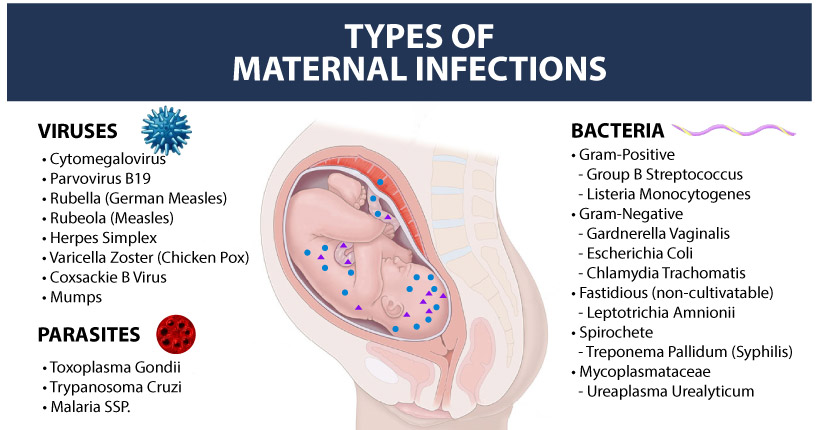
Direct transmission may also occur during labor and delivery with infected maternal blood or genital secretions.
Learn More About
Maternal Infections
Group B Strep
Group B strep (Group B Streptococcus or GBS) is a very common bacterial infection occurring in the genitourinary (genital and urinary) or gastrointestinal (digestive) tract. About one in four pregnant women will have GBS. Many of these women will have an asymptomatic case.
Group B strep is the most common and preventable maternal infections transmitted to babies by their mothers. Babies that suffer from Group B strep and are not aggressively treated are at high risk for birth injuries, including brain damage and cerebral palsy.
Once the baby is suspected to have a group B strep infection, they must be given immediate supportive care and urgent antibiotic administration. The “gold standard” is that the time lag between the decision to treat the baby and the actual administration of antibiotics should be no longer than one hour. This must occur even if the culture results have not come back yet from the lab to prevent serious birth complications.
Bacterial Vaginosis
About 25% of all pregnant women contract bacterial vaginosis (BV), making it one of the predominant maternal infections leading to adverse pregnancy outcomes. This infection is caused by a bacterium called Gardnerella vaginalis. Marked by vaginal irritation, a “fishy” odor, and abnormal vaginal discharge, BV may contribute to miscarriage, premature membrane rupture, or cerebral palsy due to other complications.
Chorioamnionitis Bacterial Infection
Chorioamnionitis is an acute bacterial infection of pregnancy that enters the mother’s uterus and invades the membrane and amniotic fluid surrounding the baby. The most common bacteria causing chorioamnionitis are Group B Strep and E.Coli.
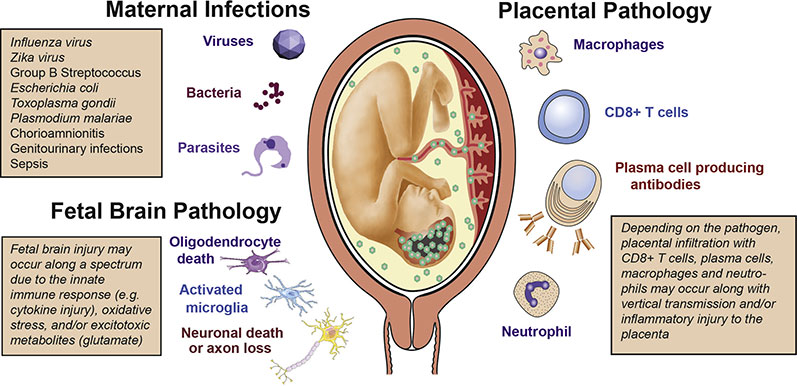
Chorioamnionitis typically occurs when the amniotic sac is broken for an extended period prior to birth. This situation is known as “premature rupture of membranes” or PROM. Another typical scenario where chorioamnionitis may develop is where the expectant mother has prolonged labor.
A delayed diagnosis or improper management of chorioamnionitis can lead to serious fetal complications, such as preterm birth, neonatal meningitis, neonatal sepsis, pneumonia, and cerebral palsy.
Learn More About
Chorioamnionitis
Birth-Acquired Herpes
Congenital herpes simplex, also known as birth-acquired herpes, is a viral infection that can be transferred from the mother to her child during pregnancy. If a mother has an unhealed genital herpes outbreak during labor, it can infect the child as they pass through the vaginal cavity during delivery.
There are two main types of herpes: HSV-1, which can present as skin lesions/blisters around the eyes and mouth, or HSV-2, which affects areas on or around the genitals. For newborns, however, herpes can be identified from other symptoms outside of blistered skin, including low-grade fevers, breathing difficulties, blue appearance around the skin, or extreme irritability with high-pitched cries.
Listeriosis
Listeriosis is a foodborne illness caused by the bacteria L. monocytogenes, known plainly as listeria. It presents typically with flu-like symptoms, including fever, chills, nausea and vomiting, fatigue, and muscle aches. The CDC estimates that around 1600 people in the U.S. are infected each year, with pregnant women being at the highest risk because of their naturally suppressed immune system.
Doctors can perform a blood test to confirm a case of listeriosis. It’s critical they act fast if they suspect a pregnant woman has been infected, because it can cause severe harm to a child if the infection is passed to them during delivery. Long term complications that may develop for a child who has been infected at birth include blindness, paralysis, seizures, developmental delays, or impairment to the brain, heart and kidneys.
Amniotic Fluid Embolism
Amniotic fluid is a liquid within the uterus that surrounds the fetus during pregnancy. It is crucial to temperature regulation, organ development, and fetal protection from impacts while the child grows in the womb.
Damage to the placenta during delivery of the child can allow amniotic fluid to exit the womb and enter the bloodstream. While amniotic fluid entering the bloodstream can be a normal and natural part of the birthing process, some women in rare cases have an allergic-like reaction to the fluid and develop an amniotic fluid embolism (AFE). For the child, this can affect the flow of blood and oxygen and result in brain injuries, birth asphyxia, fetal distress, and even fetal death in extreme cases.
For the mother, an amniotic fluid embolism can be life-threatening and cause heart and lung failure, severe bleeding, seizures, and death. Amniotic fluid embolisms are rare and estimated to occur in 1 in 40,000 deliveries, but it’s important for healthcare providers to recognize the signs so they can prevent further harm during the birthing process.
Did Medical Malpractice Cause My Labor Complication?

Many common complications arising during labor and delivery are preventable, or can at least be treated, with proper medical care. Birth Injury Medical negligence, such as a misdiagnosis or failure to catch early symptoms of a problem, or operating errors during delivery can cause injury to you or a birth injury for your child.
If a family believes medical negligence contributed to a birth complication or birth injury, legal support may be an option. A knowledgeable birth injury attorney can review the medical records and circumstances to assess whether a claim exists.
Parents whose children suffer from the long-term effects of birth complications, as well as parents who have suffered the loss of their baby, deserve to know whether it could have been prevented. Our dedicated birth injury lawyers want to help you find those answers and obtain the funds necessary to improve the quality of life for your child.
If your child has been diagnosed with a birth injury and you suspect this may have been caused in part by medical mistakes, Miller Weisbrod Olesky will thoroughly investigate the facts and hold the responsible medical providers accountable by pursuing medical malpractice claims against them.
Sometimes families are hesitant to reach out to a medical malpractice attorney or law firm. They may feel overwhelmed by their circumstances or are worried that a law firm will not be able to help them. But the only way to find out if you have a case is to talk to an attorney who understands how birth injuries can lead to developmental delays and other complications that require long-lasting medical support.
What is the Statute of Limitations in a Birth Injury Lawsuit?

A statute of limitations (SOL) is a law that sets a time limit on how long an injured person has to file a lawsuit after an accident. It is essential to understand that statutes of limitations vary based on the type of case and the state where it is filed. For instance, the deadline for birth injury claims is typically different from other claims, such as injury to personal property, fraud, contract disputes, and collection of debts.
Generally, the clock starts ticking on the date the injury occurred. However, there are exceptions to this rule, and in some cases, the statute of limitations starts when a person discovers or reasonably should have discovered an injury.
When dealing with government agencies, SOLs can become even more complex.
For example, if the party that injured you was:
- A federal employee
- Employed by a military hospital, Veterans Administration facility, or a federally funded medical entity
You may need to file a birth injury claim under the Federal Tort Claims Act (FTCA). In FTCA cases, claimants must go through certain administrative procedures before filing a lawsuit. In some states, if the negligent party was a local or state government hospital or the doctors and medical providers are employees of a governmental entity, the time period in which you must give "notice" may be shorter.
If your case is filed outside of the statute of limitations, it will typically be dismissed, and you will not be eligible to recover compensation for your injuries. Determining when a statute of limitations begins on your case can be tricky. If you're considering pursuing compensation for a birth injury, contacting an attorney as soon as possible is in your best interest.
How Can Birth Injury Attorneys at Miller Weisbrod Olesky Help?

Birth injuries that trace back to labor and delivery complications can be prevented in many cases, but it takes a detailed expert review of the facts and circumstances of your pregnancy and your child's birth to determine whether the injury was the result of medical malpractice.
Our Process
At Miller Weisbrod Olesky, a team of committed attorneys, nurses and paraprofessionals uses our detailed medical negligence case review process to assess your potential birth injury case. We start by learning more about you and your child and the status of meeting/missing developmental milestones. Then we gather medical records to determine what happened before, during, and after your delivery. We call in skilled medical experts who review your records and let us know if they think medical errors could have caused you or your child's injuries.
If we feel medical negligence caused or contributed to complications with your pregnancy or your child's injuries, we meet with you to discuss how you can receive compensation from the medical professionals who made the errors.
At no point in our legal intake process will we ask you to pay anything. The medical review of your case and the consultation are free. We only receive payment when you do. The sooner you reach out to us, the sooner we can begin investigating your case and gathering the evidence needed to support your claim.
We work on a contingency fee basis, meaning you won't pay any legal fees unless we win your case. Contact us today to schedule your free consultation by calling our toll-free line at 888-987-0005 or by filling out our online request form.
